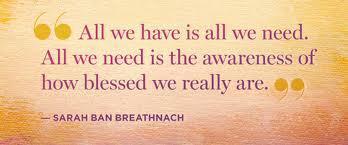hola hermano - if a person is not upset by what is going on in the world today including anger at injustice, racism, prejudice, discrimination, militarism, colonialism, climate change and more, they are either in denial or not paying attention. Anger is passion so when directed as you are doing in non-violent action that to me is all for the good. you just have to be skillful with your inner process so the anger energy does not cause harm to you. We are called to be agents of conscious evolution, co-creating with spirit the kind of world that is possible to create when we all get on the same page of understanding how we are all interconnected and all related, that what we give to another, we give to ourselves, our families, our communities. Dr. Tomas Pinkson
"...you just have to be skillful with your inner process so the anger energy does not cause harm to you."
First of all anger is not pathological, however if bottled up it can become pathological with violent outbreaks or a deep depression. The normality of anger is seen in the grieving process. DABDA, Denial, Anger, Bargaining, Depression, ACCEPTANCE.
Healthy and appropriate expression involves neither suppressing anger completely, nor thoughtlessly or indiscriminately letting it out. Healthy expressions of anger take into account other people's rights and feelings and consider the appropriateness of the situation.
Anger is expressed in one of four ways. Three out of the four types are unhealthy manifestations: aggressive, passive-aggressive and suppressive. While only one, assertive is healthy. ... The goal of anger management is to move a person from unhealthy expressions of anger into healthy communications.
Healthy Anger Dr. Bernard Golden
Throughout the years of my work with clients, I have come to observe the very positive aspects of anger and to define specific skills that are essential for the practice of “healthy anger.” These include the following:
1. Healthy anger means observing and experiencing anger without being overwhelmed by it and reacting to it.
2. Healthy anger means recognizing our anger as a signal to explore the feelings, thoughts, and bodily sensations that precede it.
3. Healthy anger means viewing anger as a signal to direct our attention inward to identify our core desires, needs, and values.
4. Healthy anger calls for developing self-compassion, which includes skills to enhance our sense of safety and connection.
5. Healthy anger includes developing strategies to let go of anger, which may include forgiving others and yourself.
6. Healthy anger encompasses compassionate practices that don’t cause suffering for others or for ourselves.
7. Healthy anger means learning how to communicate assertively with others.
8. Healthy anger enhances our resilience and overall well-being.
My research and clinical practice have informed my view that cultivating healthy anger involves self-reflection, using skills from three broad areas of understanding and practice: mindfulness and mindfulness meditation, compassion (including self-compassion), and self-awareness.
Mindfulness and mindfulness meditation help you observe your own experiences without reacting to them or becoming overwhelmed by them. It encompasses embracing the curiosity of a child as you view thoughts, feelings and physical reactions as being temporary rather than a fixed part of who you are. This offers expanded freedom to choose how to react to them.
Research regarding self-compassion has shown that self-compassion increases resilience and stability, decreases negative self-evaluations, defensiveness, and the compulsion to see oneself as better than others. Thoughts and actions that support self-compassion provide the soothing essential to sit with tension of our pain.
When practiced together, mindfulness and self-compassion skills “reduce reactivity, strengthen autonomy, promote emotional sensitivity, enhance understanding of historical sources of our hurts, and provide guidelines for safe, effective communication,” says Harvey Aronson, author of Buddhist Practice on Western Ground.

No comments:
Post a Comment